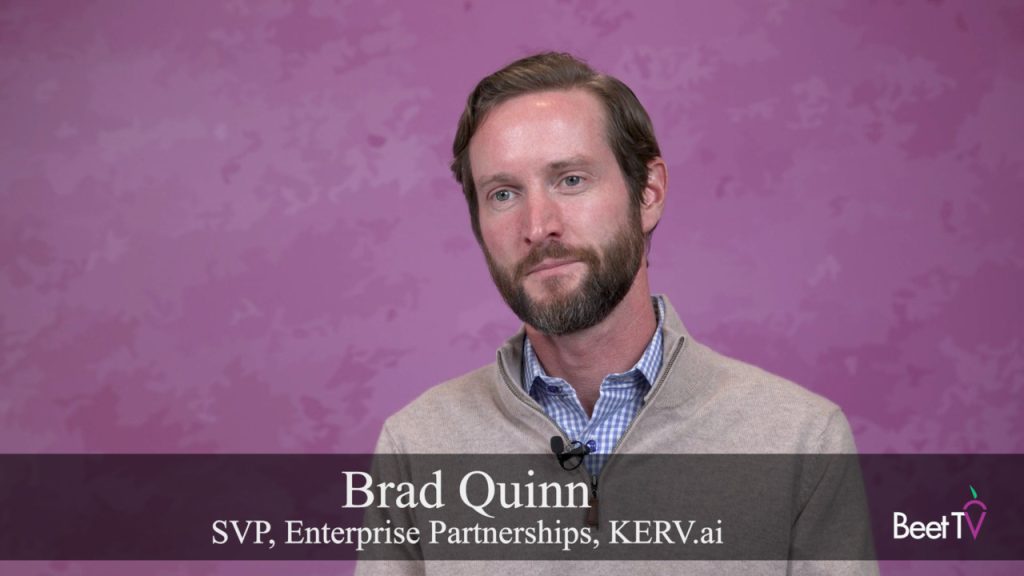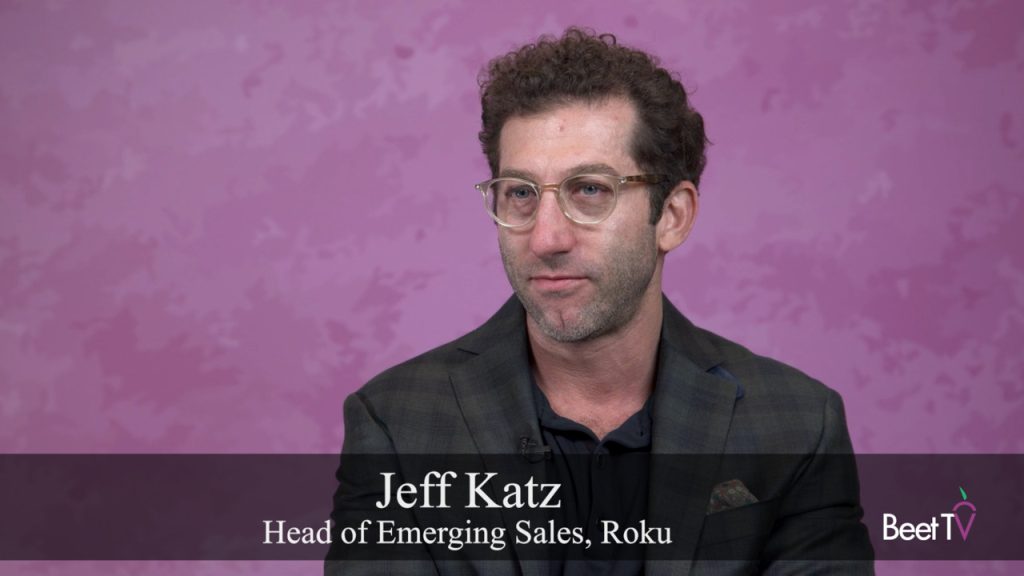For DISH Media Sales, addressable television is both a futures and a future market. The former relates to uncertainty over when addressable inventory will run, while the latter is the eventual blending of DISH linear ads and ads on the company’s Sling service.
“When you think about buying an audience with addressable television it’s a futures market,” Adam Gaynor, the company’s VP of Media Sales & Analytics, said during a panel discussion in Manhattan at the recent Beet.TV Leadership Summit on cross-screen addressability. “We don’t know where the inventory runs until that viewer is watching television. We have to assume the impressions that we’re going to have.”
In response to a question from moderator Matt Spiegel of MediaLink, Gaynor explained the benefit of Sling attracting a different audience (think cord cutters, shavers, etc.) than DISH so that the two don’t cannibalize each other. Combining them for advertisers is where the future comes in.
“We’ve got two buckets of impressions that we have the opportunity to sell,” Gaynor said. “The next step is figuring out how to measure across all of these screens, which is why we’re still selling them separately. We have a very robust and mature measurement system on the linear side the addressable side. Right now we’re building out the measurement system on the Sling side.”
To make addressable TV work, DISH pulls 30-second spots out of sale. The remaining household impressions—Gaynor likened them to sugar crystals in a bowl—are available to advertisers that want to reach a specific audience. This means there will be leftover crystals.
“What we saw was an opportunity to take those crystals and put them into a marketplace where we can apply data to make them more attractive to advertisers,” Gaynor said. “Frankly that’s where the programmatic process took place in the digital world. You had a sheer volume of inventory that at first glance didn’t have any value. But when you put data against those impressions there was value. It’s what we’re doing on television.”
When an advertiser comes in through one of DISH’s demand-side platform partners, a minimum of 80,000 impressions must be accumulated before DISH executes the buy. “The beauty of our addressable platform is that advertisers will only pay for the audience they are reaching, and yes, it’s going to be a higher CPM, but it’s a lower ECPM,” Gaynor said, referring to effective cost-per-thousand impressions.
This video was produced at the Beet.TV leadership summit in New York on cross-platform addressability on July 26. The event and the series are presented by DISH Media Sales and Experian Marketing Services. Please visit this page to find additional videos from the summit.


























